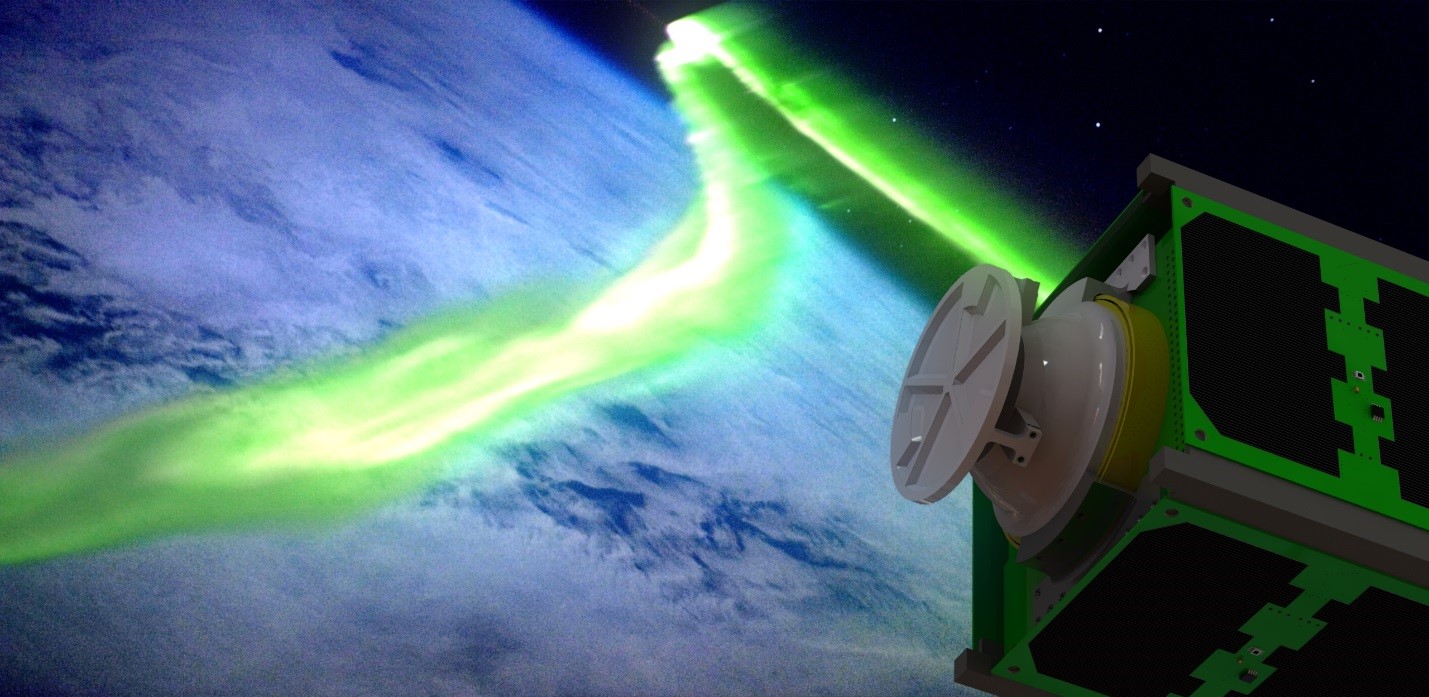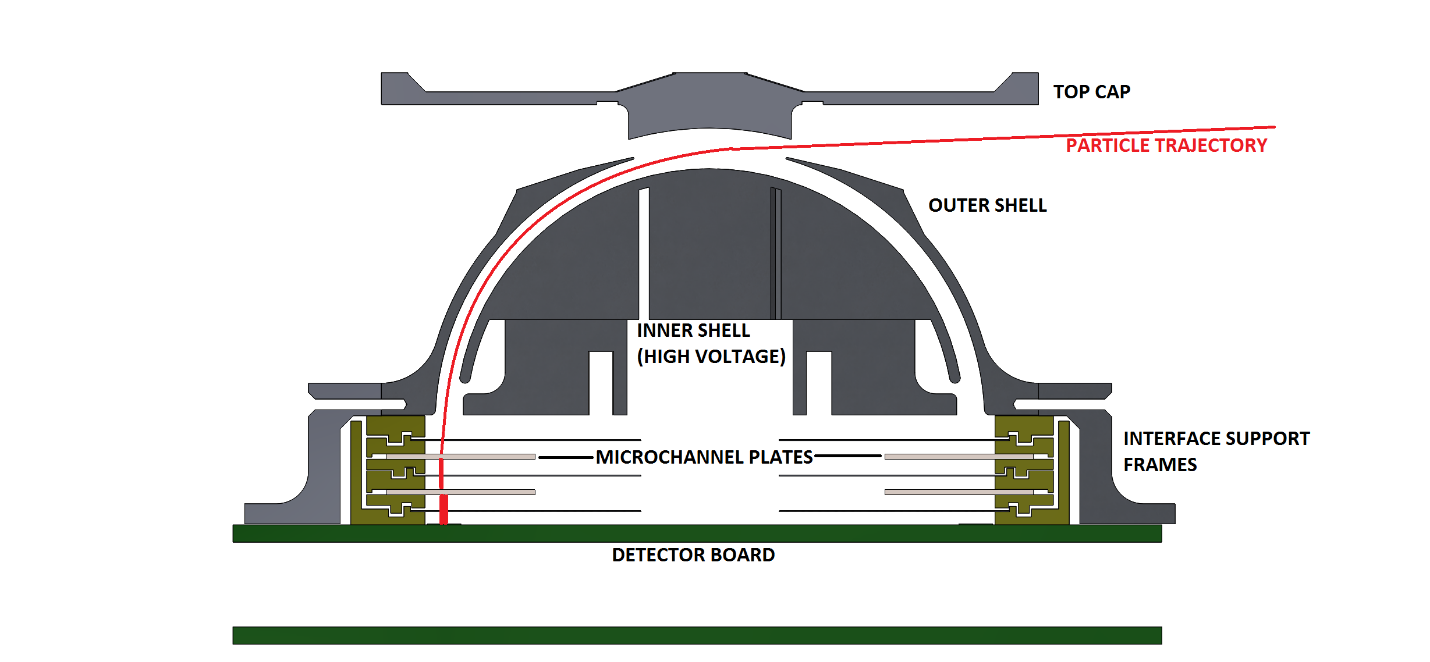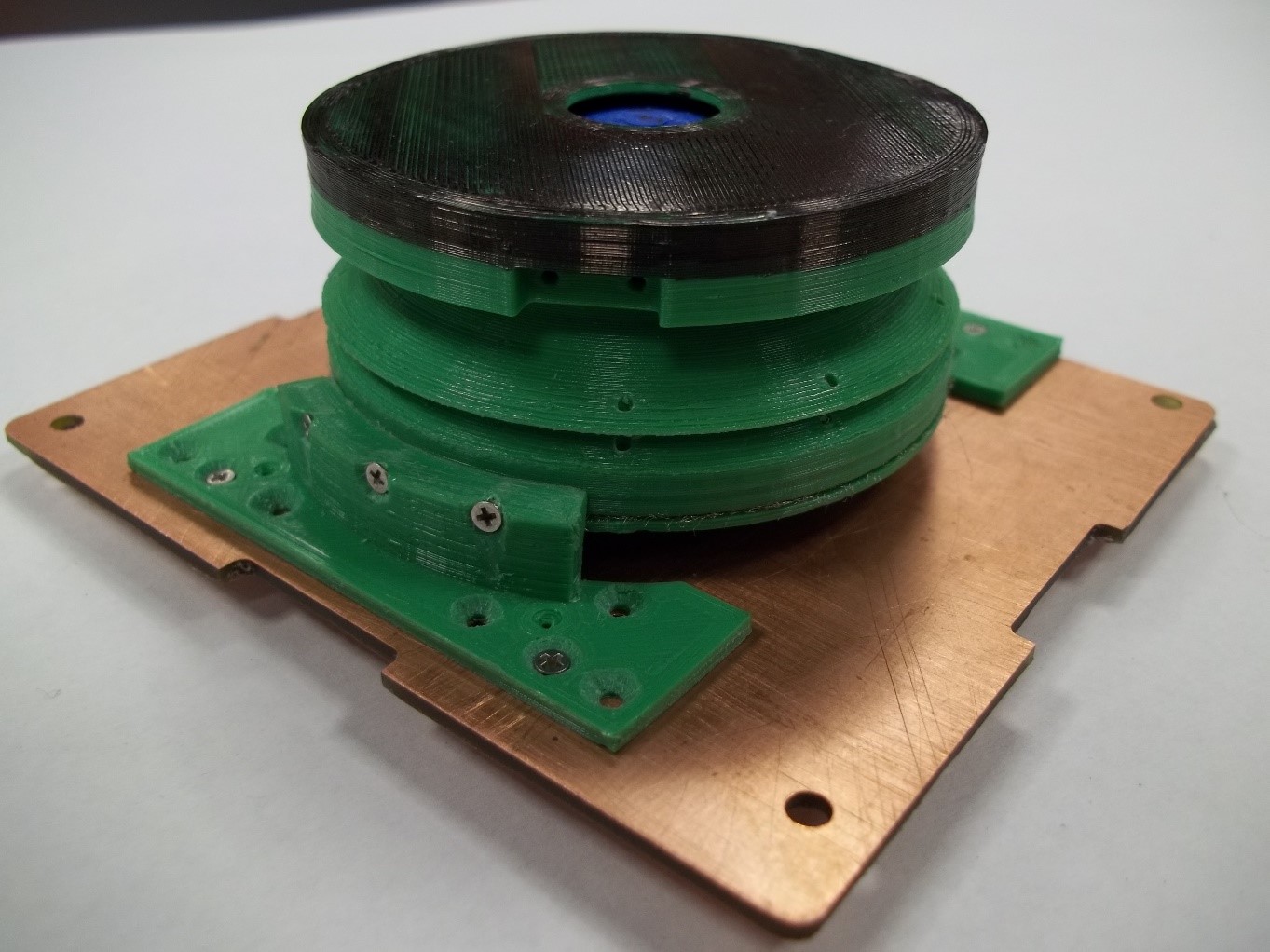ACAPS: Alaska CubeSat Auroral Plasma Spectrometer

Overview
ACAPS is a charged particle spectrometer designed for use on CubeSats. It will fly through active regions of Earth's magnetosphere and record the rapidly changing flux of electrons and ions. We intend to fly ACAPS in a low polar orbit over the Aurora, observing charged particles as they are accelerated along field lines to the Ionosphere.
ACAPS will use a hemispherical electrostatic analyzer of the type developed by C.W. Carlson. It accepts particles from all around a planar field of view, and guides them down to a circular detector region, while also differentiating the particle’s kinetic energies. The charged particles are then directed toward a stack of Micro-Channel Plates, which multiply the particle’s signal to be measurable.
Design
 ACAPS takes full advantage of the CubeSat form factor's "Tuna Can”, a 64mm diameter cylindrical open volume above the Z- face of the cube, which allows extra space for instruments to protrude beyond the structural rails. ACAPS will be approximately 50mm in total height, but a large portion of that is in the tuna can, leaving more space in the cube for other systems.
ACAPS takes full advantage of the CubeSat form factor's "Tuna Can”, a 64mm diameter cylindrical open volume above the Z- face of the cube, which allows extra space for instruments to protrude beyond the structural rails. ACAPS will be approximately 50mm in total height, but a large portion of that is in the tuna can, leaving more space in the cube for other systems.
ACAPs will likely work on a 1.5U cube, and may even work on 1U. However, ACAPS is more suited to larger CubeSats to allow for more solar power, and more reliable attitude control.
Design Challenges
- Safely and reliably operating high voltage in small spaces
- Minimizing outgassing of all materials
- Minimizing instrument size and weight
- Minimizing power consumption
- Modeling and testing particle trajectories
- Constructing structures which are dimensionally consistent under vibration and shocks.
Current State and Prototyping
 Mechanical design work on ACAPS started in May 2018. As of October 2018, a first revision has been defined and plastic 3D printed prototypes have been assembled. These prototypes do not support the necessary high voltages, but they allow us to test the mechanical assembly, and are helpful for visualization. Most of the design work so far has been mechanical-focused, but electrical work is needed for high voltage power supplies, particle detection circuitry, and data handling.
Mechanical design work on ACAPS started in May 2018. As of October 2018, a first revision has been defined and plastic 3D printed prototypes have been assembled. These prototypes do not support the necessary high voltages, but they allow us to test the mechanical assembly, and are helpful for visualization. Most of the design work so far has been mechanical-focused, but electrical work is needed for high voltage power supplies, particle detection circuitry, and data handling.